Plasma cells (AKA plasma B cells) are the key cells involved in humoral immunity. They develop from naïve B cells as a result of antigen exposure and pump out large numbers of monoclonal antibodies in response to invading pathogens.
The antibodies produced by a plasma cell are specific to a particular pathogen. Once released from the plasma cells, they circulate in the bloodstream until they encounter their antigen, at which point they bind and either neutralize the pathogen or mark it for destruction by other immune components.
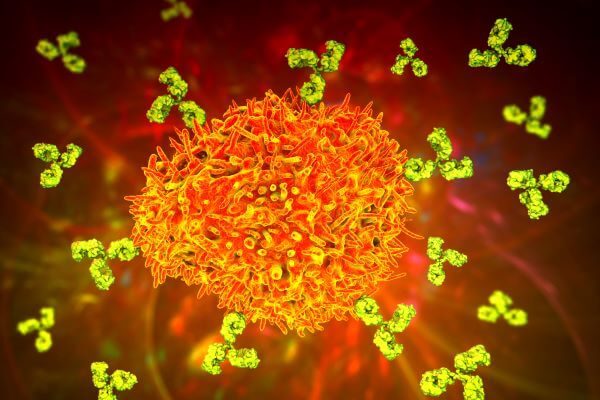
What is a Plasma Cell?
Plasma cells are a type of white blood cell that produces large amounts of antibodies.
Antibodies (AKA immunoglobins) are a type of proteins that defend the body from invading pathogens. Once released by the plasma B cells, they circulate in the blood on the lookout for foreign invaders. Antibodies can attach to specific antigens found on the surface of bacteria, viruses, and other pathogens or foreign substances, forming an antigen-antibody complex.
The antibodies produced by plasma cells are specific to a single type of antigen, meaning they can only attach to one particular antigen. When these antibodies bind to their target antigen, they either neutralize the invader or mark it for destruction by other immune components.
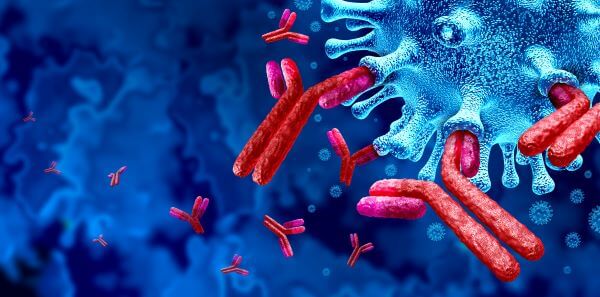
Development of Plasma Cells
Plasma cells develop from activated naïve B cells. B cells are a type of lymphocyte that forms in the bone marrow. Once the newly-formed B cells have matured, they move from the bone marrow into the lymphatic system where they circulate throughout the body. At this point, they are known as naïve B cells (i.e., B cells that have never encountered an antigen).
B cells are covered in membrane-bound antibodies that are specific to just one type of antigen. There are millions of different types of membrane-bound antibodies, but each B cell has just one distinct type. When a naïve B cell bumps into an antigen that matches their membrane-bound antibodies, an antigen-antibody complex is formed and the B cell is activated.
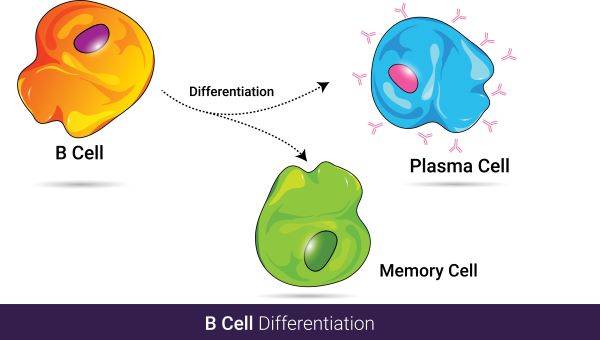
Once activated, the B cell starts to multiply rapidly and differentiates to become either memory B cells or plasma cells. Memory B cells are clones of the original B cell and have the same antibodies on their surface membrane. They can remain in the bloodstream for decades after exposure to an antigen and will ‘remember’ the pathogen, which is how people develop long-term immunity against certain diseases.
Plasma B cells are antibody factories and pump out antibodies that are specific to the antigen on the surface of the target pathogen. These monoclonal antibodies (identical antibodies produced by identical cells) circulate in the body seeking out their target antigens. Once they find them, they bind to the antigen and tag the pathogen for destruction by other components of the immune system.
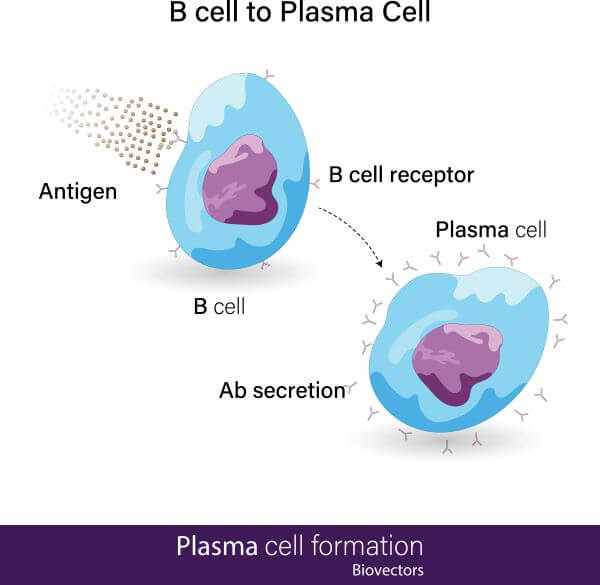
Function of Plasma Cells
Plasma cells are a key part of the adaptive immune system, as they are the main cells responsible for humoral immunity. Humoral immunity is the aspect of immunity that is mediated by molecules, such as secreted antibodies.
Plasma cells produce antibody molecules at a rate of several thousand per second which, once released into the bloodstream, circulate in the body seeking out antigens. Some of these are neutralizing antibodies which, after binding to their specific antigen, ‘deactivate’ the pathogen by blocking key surface sites related to infectivity. Other antibodies are binding antibodies. These bind to the antigen and ‘tag’ the pathogen it is attached to for destruction by alerting other immune cells to its location.
Therefore, plasma B cells can rapidly clear infectious agents from the bloodstream and play a key role in defending the body against pathogens.

Structure of Plasma Cells
Plasma cells typically measure between 14 and 20 micrometers and can be viewed using a light microscope. They usually contain a single nucleus alongside other organelles, including mitochondria, ribosomes, Golgi apparatus, endoplasmic reticulum, lysosomes, and a cell membrane.
Many of the structures in plasma cells (such as the endoplasmic reticulum, Golgi apparatus, and ribosomes) are devoted to protein production. This allows plasma cells to secrete large numbers of antibodies, but also contributes to their short lifespan by placing the cell under excessive stress.
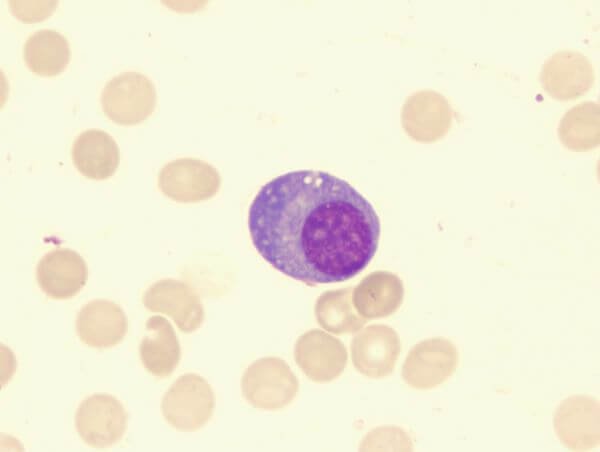
Plasma Cells vs. Memory B Cells
Plasma cells and memory B cells both develop from activated B cells and both express antibodies against a specific pathogen. However, despite their similarities, these two cells play distinctly different roles in the adaptive immune system.
Memory B Cells |
Plasma Cells |
| Antibodies are membrane-bound | Antibodies are secreted |
| Can persist in the bloodstream for decades | Often short-lived and survive 3-5 days |
| Prevent re-infection from certain pathogens (long-term immunity) | Remove pathogens in the event of current infections |
